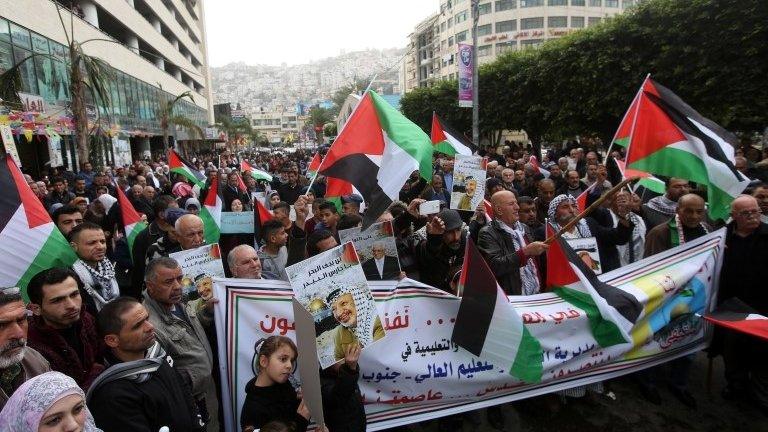Gaza-Israel violence: Israel warns of action inside Gaza
- Published
Clashes took place along Gaza's border with Israel
The Israeli military has warned it could take action against "terrorist targets" inside the Gaza Strip.
Brig Gen Ronen Manelis told journalists that Hamas - the militant group that controls Gaza - was using Palestinian protests as a cover for launching attacks on Israel.
Palestinian leader Mahmoud Abbas has said Israel bears "full responsibility" for bloodshed on Friday.
Sixteen Palestinians were killed by Israeli soldiers at the Gaza border.
It was the single deadliest day in the Israel-Palestine conflict since the 2014 Gaza war. The UN Security Council condemned the violence after an emergency session.
Thousands of Palestinians had marched to the border at the start of a six-week protest, dubbed the Great March of Return. The protest comes ahead of the 70th anniversary of the founding of Israel and the exodus of many Arabs - which Palestinians refer to as the "Nakba" (Catastrophe).
Israeli officials said soldiers opened fire after rioting broke out. The UN says hundreds of people were injured.
On Saturday, Israeli Prime Minister Benjamin Netanyahu praised soldiers for "guarding the country's borders, allowing Israelis to celebrate the holiday [of Passover] in peace".
The UN Secretary General Antonio Guterres has called for an independent inquiry into Friday's violence.
UN deputy political affairs chief Taye-Brook Zerihoun told the council that "Israel must uphold its responsibilities under international human rights and humanitarian law".
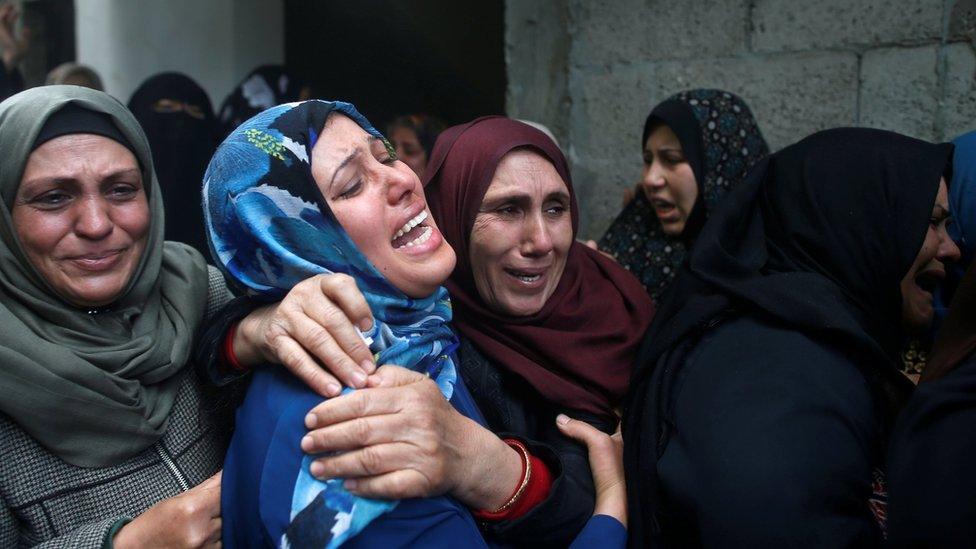
Thousands of Palestinians attended funerals for some of the dead, including Hamdan Abu Amsheh
Israel's ambassador to the UN, Danny Danon, blamed the bloodshed on Hamas.
Later Gen Manelis said Friday's events were "not a protest demonstration" but "organised terrorist activity" by Hamas.
"If it continues, we shall have no choice but to respond inside the Gaza Strip against terrorist targets which we understand to be behind these events," he said according to AFP news agency.
On Saturday Palestinians observed a day of national mourning for those killed and thousands of people attended funerals. Palestinians also called a general strike.
A few hundred protesters returned to a tent city put up near the border in preparation for the demonstration to resume, said AFP.
At least 15 people were wounded in renewed clashes along the Gaza border on Saturday, said Gazan health authorities.

Who was killed in the protests?
The first to die was Omar Samour, 27 - a Palestinian farmer killed in Israeli shelling as he worked his land near Khan Younis early on Friday, before the protests began.
Most of the other dead - reported to be mainly men under 40 - were shot dead at points along the length of the 65km (40-mile) fenced border, from Jabalia in the north to Rafah in the south,
Hamas said five of them were members of its military wing, Izzedine al-Qassam Brigades, reported Israeli media.

Why was there tension at the border?
Thousands of Palestinians had marched to the border at the start of a six-week protest.
Its aim is to assert what the protesters regard as their right to return to towns and villages from which their families fled, or were driven out, when the state of Israel was created in 1948.
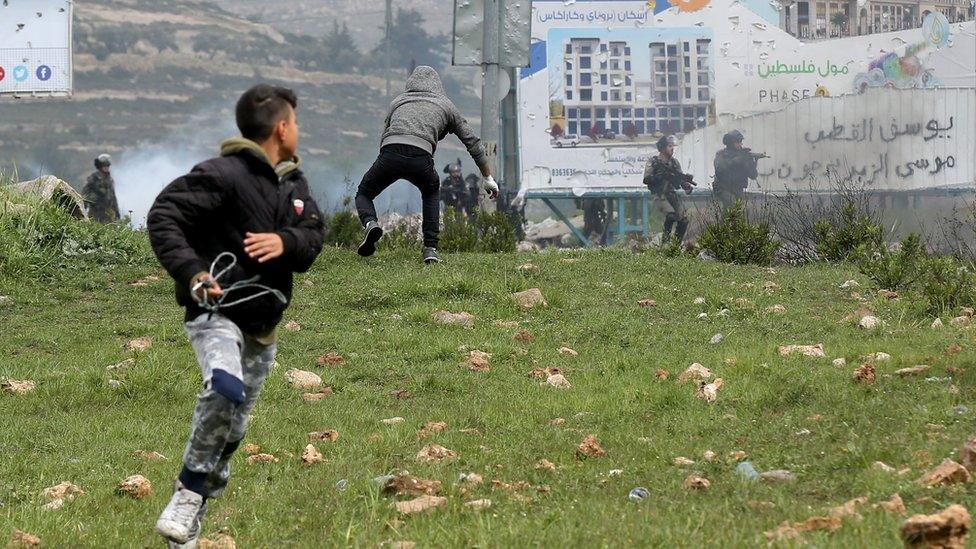
There were clashes near Ramallah
Hamas does not recognise Israel, but last year said it was ready to accept an interim Palestinian state limited to Gaza and the West Bank.
Palestinians have pitched five camps near the border for the protest, from Beit Hanoun in the north to Rafah near the Egyptian border.
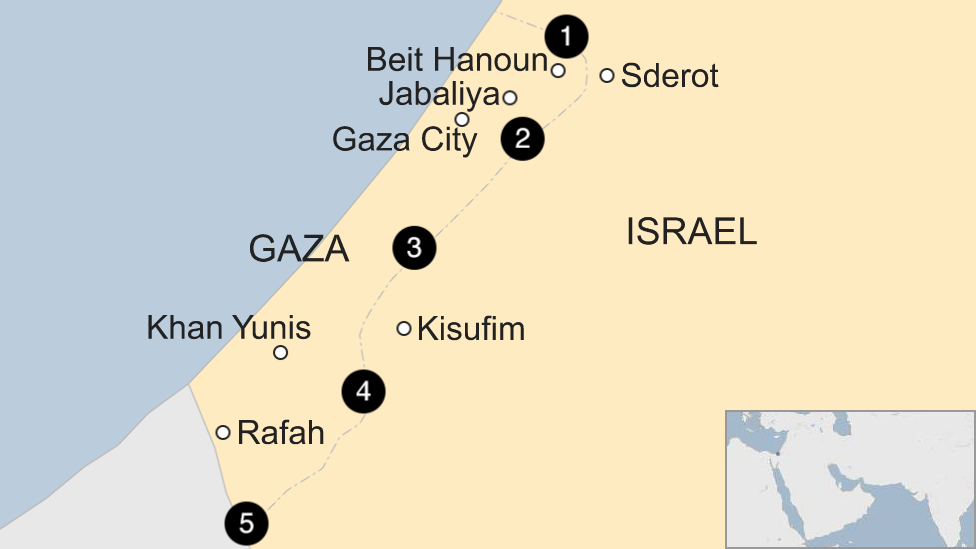
Map showing the position of the five protest camps. Source: Haaretz
The Israel Defense Forces (IDF), which enforces a no-go zone along the Gaza border, doubled its troop presence for the protest.
What do the two sides say happened on Friday?
The IDF said there were about 17,000 Palestinians in five locations near the border fence. It said it had "enforced a closed military zone" in the area around Gaza.
Although most protesters stayed in the encampments, some groups of youths ignored organisers' calls to stay away from the fence and headed closer to Israeli positions.
The IDF said troops were "firing towards the main instigators" to break up rioting, in which petrol bombs and stones were thrown at the fence.
A spokesman said all those who were killed had been trying to breach or damage the border fence, the Jerusalem Post reports.
The Palestinian side accused Israel of using disproportionate force. Tanks and snipers were deployed, and witnesses said a drone was used to drop tear gas in at least one location.
The Palestinian envoy to the UN Riyad Mansour told the council that more than 1,400 Palestinian civilians had been injured.
- Published26 June 2023
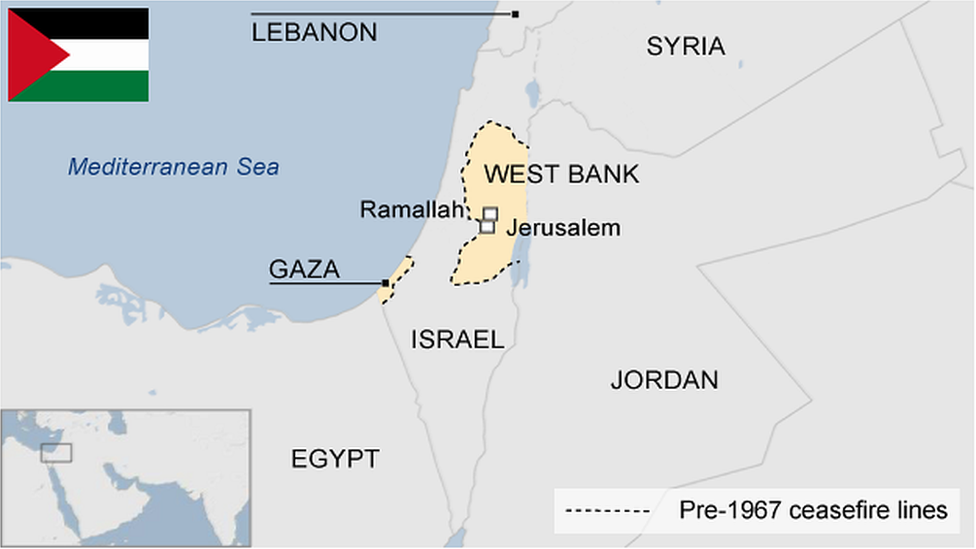
- Published31 March 2018

- Published1 July 2021
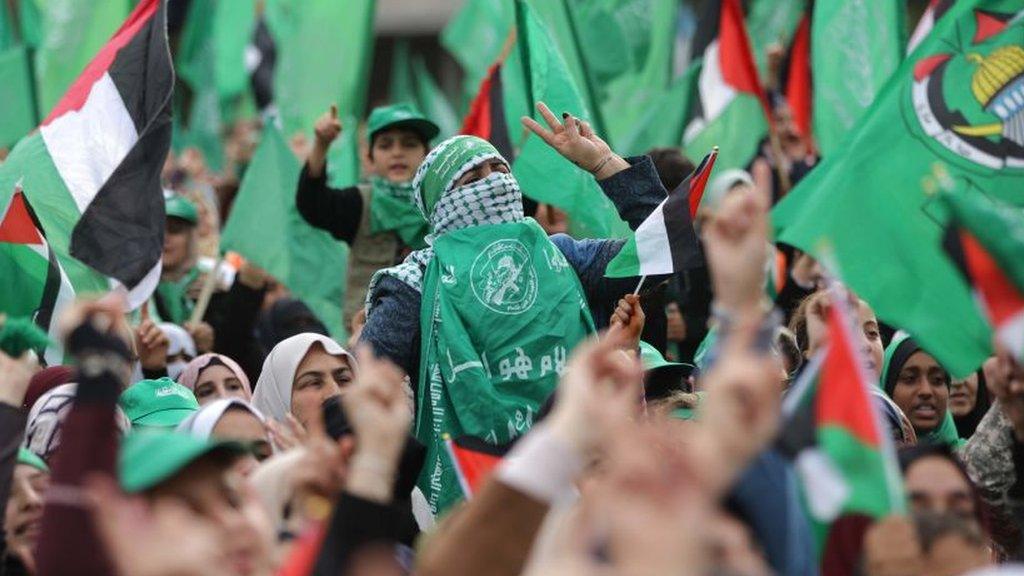
- Published16 September 2021
- Published3 January 2018
